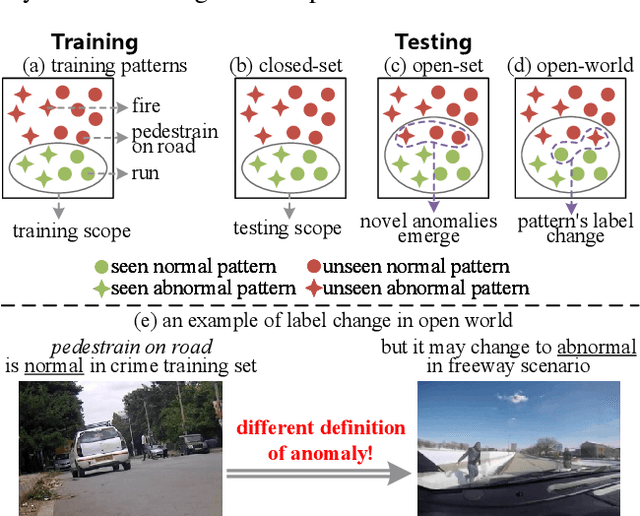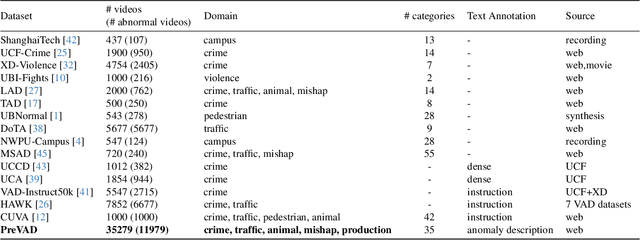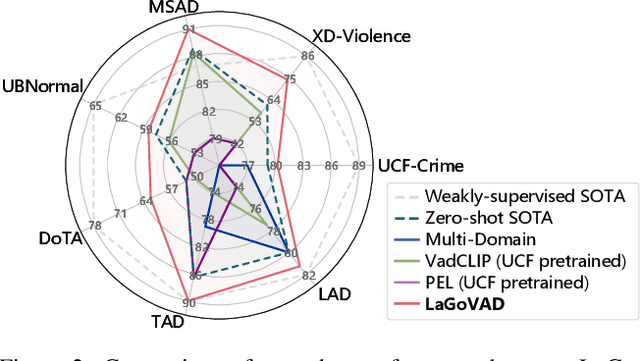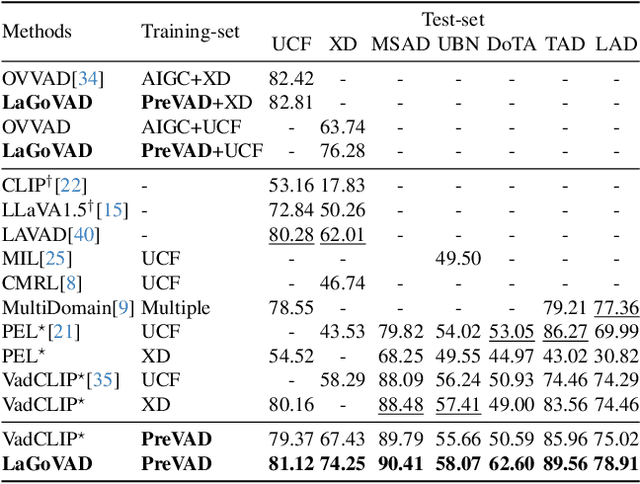Xiaoyu Wu
POLAR: Policy-based Layerwise Reinforcement Learning Method for Stealthy Backdoor Attacks in Federated Learning
Oct 21, 2025Abstract:Federated Learning (FL) enables decentralized model training across multiple clients without exposing local data, but its distributed feature makes it vulnerable to backdoor attacks. Despite early FL backdoor attacks modifying entire models, recent studies have explored the concept of backdoor-critical (BC) layers, which poison the chosen influential layers to maintain stealthiness while achieving high effectiveness. However, existing BC layers approaches rely on rule-based selection without consideration of the interrelations between layers, making them ineffective and prone to detection by advanced defenses. In this paper, we propose POLAR (POlicy-based LAyerwise Reinforcement learning), the first pipeline to creatively adopt RL to solve the BC layer selection problem in layer-wise backdoor attack. Different from other commonly used RL paradigm, POLAR is lightweight with Bernoulli sampling. POLAR dynamically learns an attack strategy, optimizing layer selection using policy gradient updates based on backdoor success rate (BSR) improvements. To ensure stealthiness, we introduce a regularization constraint that limits the number of modified layers by penalizing large attack footprints. Extensive experiments demonstrate that POLAR outperforms the latest attack methods by up to 40% against six state-of-the-art (SOTA) defenses.
CTA-Flux: Integrating Chinese Cultural Semantics into High-Quality English Text-to-Image Communities
Aug 20, 2025Abstract:We proposed the Chinese Text Adapter-Flux (CTA-Flux). An adaptation method fits the Chinese text inputs to Flux, a powerful text-to-image (TTI) generative model initially trained on the English corpus. Despite the notable image generation ability conditioned on English text inputs, Flux performs poorly when processing non-English prompts, particularly due to linguistic and cultural biases inherent in predominantly English-centric training datasets. Existing approaches, such as translating non-English prompts into English or finetuning models for bilingual mappings, inadequately address culturally specific semantics, compromising image authenticity and quality. To address this issue, we introduce a novel method to bridge Chinese semantic understanding with compatibility in English-centric TTI model communities. Existing approaches relying on ControlNet-like architectures typically require a massive parameter scale and lack direct control over Chinese semantics. In comparison, CTA-flux leverages MultiModal Diffusion Transformer (MMDiT) to control the Flux backbone directly, significantly reducing the number of parameters while enhancing the model's understanding of Chinese semantics. This integration significantly improves the generation quality and cultural authenticity without extensive retraining of the entire model, thus maintaining compatibility with existing text-to-image plugins such as LoRA, IP-Adapter, and ControlNet. Empirical evaluations demonstrate that CTA-flux supports Chinese and English prompts and achieves superior image generation quality, visual realism, and faithful depiction of Chinese semantics.
NanoControl: A Lightweight Framework for Precise and Efficient Control in Diffusion Transformer
Aug 14, 2025Abstract:Diffusion Transformers (DiTs) have demonstrated exceptional capabilities in text-to-image synthesis. However, in the domain of controllable text-to-image generation using DiTs, most existing methods still rely on the ControlNet paradigm originally designed for UNet-based diffusion models. This paradigm introduces significant parameter overhead and increased computational costs. To address these challenges, we propose the Nano Control Diffusion Transformer (NanoControl), which employs Flux as the backbone network. Our model achieves state-of-the-art controllable text-to-image generation performance while incurring only a 0.024\% increase in parameter count and a 0.029\% increase in GFLOPs, thus enabling highly efficient controllable generation. Specifically, rather than duplicating the DiT backbone for control, we design a LoRA-style (low-rank adaptation) control module that directly learns control signals from raw conditioning inputs. Furthermore, we introduce a KV-Context Augmentation mechanism that integrates condition-specific key-value information into the backbone in a simple yet highly effective manner, facilitating deep fusion of conditional features. Extensive benchmark experiments demonstrate that NanoControl significantly reduces computational overhead compared to conventional control approaches, while maintaining superior generation quality and achieving improved controllability.
FLUX-Makeup: High-Fidelity, Identity-Consistent, and Robust Makeup Transfer via Diffusion Transformer
Aug 07, 2025Abstract:Makeup transfer aims to apply the makeup style from a reference face to a target face and has been increasingly adopted in practical applications. Existing GAN-based approaches typically rely on carefully designed loss functions to balance transfer quality and facial identity consistency, while diffusion-based methods often depend on additional face-control modules or algorithms to preserve identity. However, these auxiliary components tend to introduce extra errors, leading to suboptimal transfer results. To overcome these limitations, we propose FLUX-Makeup, a high-fidelity, identity-consistent, and robust makeup transfer framework that eliminates the need for any auxiliary face-control components. Instead, our method directly leverages source-reference image pairs to achieve superior transfer performance. Specifically, we build our framework upon FLUX-Kontext, using the source image as its native conditional input. Furthermore, we introduce RefLoRAInjector, a lightweight makeup feature injector that decouples the reference pathway from the backbone, enabling efficient and comprehensive extraction of makeup-related information. In parallel, we design a robust and scalable data generation pipeline to provide more accurate supervision during training. The paired makeup datasets produced by this pipeline significantly surpass the quality of all existing datasets. Extensive experiments demonstrate that FLUX-Makeup achieves state-of-the-art performance, exhibiting strong robustness across diverse scenarios.
Enhancing Video Memorability Prediction with Text-Motion Cross-modal Contrastive Loss and Its Application in Video Summarization
Jun 10, 2025Abstract:Video memorability refers to the ability of videos to be recalled after viewing, playing a crucial role in creating content that remains memorable. Existing models typically focus on extracting multimodal features to predict video memorability scores but often fail to fully utilize motion cues. The representation of motion features is compromised during the fine-tuning phase of the motion feature extractor due to a lack of labeled data. In this paper, we introduce the Text-Motion Cross-modal Contrastive Loss (TMCCL), a multimodal video memorability prediction model designed to enhance the representation of motion features. We tackle the challenge of improving motion feature representation by leveraging text description similarities across videos to establish positive and negative motion sample sets for a given target. This enhancement allows the model to learn similar feature representations for semantically related motion content, resulting in more accurate memorability predictions. Our model achieves state-of-the-art performance on two video memorability prediction datasets. Moreover, the potential applications of video memorability prediction have been underexplored. To address this gap, we present Memorability Weighted Correction for Video Summarization (MWCVS), using video memorability prediction to reduce subjectivity in video summarization labels. Experimental results on two video summarization datasets demonstrate the effectiveness of MWCVS, showcasing the promising applications of video memorability prediction.
MLVTG: Mamba-Based Feature Alignment and LLM-Driven Purification for Multi-Modal Video Temporal Grounding
Jun 10, 2025Abstract:Video Temporal Grounding (VTG), which aims to localize video clips corresponding to natural language queries, is a fundamental yet challenging task in video understanding. Existing Transformer-based methods often suffer from redundant attention and suboptimal multi-modal alignment. To address these limitations, we propose MLVTG, a novel framework that integrates two key modules: MambaAligner and LLMRefiner. MambaAligner uses stacked Vision Mamba blocks as a backbone instead of Transformers to model temporal dependencies and extract robust video representations for multi-modal alignment. LLMRefiner leverages the specific frozen layer of a pre-trained Large Language Model (LLM) to implicitly transfer semantic priors, enhancing multi-modal alignment without fine-tuning. This dual alignment strategy, temporal modeling via structured state-space dynamics and semantic purification via textual priors, enables more precise localization. Extensive experiments on QVHighlights, Charades-STA, and TVSum demonstrate that MLVTG achieves state-of-the-art performance and significantly outperforms existing baselines.
TableEval: A Real-World Benchmark for Complex, Multilingual, and Multi-Structured Table Question Answering
Jun 04, 2025Abstract:LLMs have shown impressive progress in natural language processing. However, they still face significant challenges in TableQA, where real-world complexities such as diverse table structures, multilingual data, and domain-specific reasoning are crucial. Existing TableQA benchmarks are often limited by their focus on simple flat tables and suffer from data leakage. Furthermore, most benchmarks are monolingual and fail to capture the cross-lingual and cross-domain variability in practical applications. To address these limitations, we introduce TableEval, a new benchmark designed to evaluate LLMs on realistic TableQA tasks. Specifically, TableEval includes tables with various structures (such as concise, hierarchical, and nested tables) collected from four domains (including government, finance, academia, and industry reports). Besides, TableEval features cross-lingual scenarios with tables in Simplified Chinese, Traditional Chinese, and English. To minimize the risk of data leakage, we collect all data from recent real-world documents. Considering that existing TableQA metrics fail to capture semantic accuracy, we further propose SEAT, a new evaluation framework that assesses the alignment between model responses and reference answers at the sub-question level. Experimental results have shown that SEAT achieves high agreement with human judgment. Extensive experiments on TableEval reveal critical gaps in the ability of state-of-the-art LLMs to handle these complex, real-world TableQA tasks, offering insights for future improvements. We make our dataset available here: https://github.com/wenge-research/TableEval.
Breaking the Gold Standard: Extracting Forgotten Data under Exact Unlearning in Large Language Models
May 30, 2025Abstract:Large language models are typically trained on datasets collected from the web, which may inadvertently contain harmful or sensitive personal information. To address growing privacy concerns, unlearning methods have been proposed to remove the influence of specific data from trained models. Of these, exact unlearning -- which retrains the model from scratch without the target data -- is widely regarded the gold standard, believed to be robust against privacy-related attacks. In this paper, we challenge this assumption by introducing a novel data extraction attack that compromises even exact unlearning. Our method leverages both the pre- and post-unlearning models: by guiding the post-unlearning model using signals from the pre-unlearning model, we uncover patterns that reflect the removed data distribution. Combining model guidance with a token filtering strategy, our attack significantly improves extraction success rates -- doubling performance in some cases -- across common benchmarks such as MUSE, TOFU, and WMDP. Furthermore, we demonstrate our attack's effectiveness on a simulated medical diagnosis dataset to highlight real-world privacy risks associated with exact unlearning. In light of our findings, which suggest that unlearning may, in a contradictory way, increase the risk of privacy leakage, we advocate for evaluation of unlearning methods to consider broader threat models that account not only for post-unlearning models but also for adversarial access to prior checkpoints.
Rethinking Metrics and Benchmarks of Video Anomaly Detection
May 25, 2025Abstract:Video Anomaly Detection (VAD), which aims to detect anomalies that deviate from expectation, has attracted increasing attention in recent years. Existing advancements in VAD primarily focus on model architectures and training strategies, while devoting insufficient attention to evaluation metrics and benchmarks. In this paper, we rethink VAD evaluation protocols through comprehensive experimental analyses, revealing three critical limitations in current practices: 1) existing metrics are significantly influenced by single annotation bias; 2) current metrics fail to reward early detection of anomalies; 3) available benchmarks lack the capability to evaluate scene overfitting. To address these limitations, we propose three novel evaluation methods: first, we establish averaged AUC/AP metrics over multi-round annotations to mitigate single annotation bias; second, we develop a Latency-aware Average Precision (LaAP) metric that rewards early and accurate anomaly detection; and finally, we introduce two hard normal benchmarks (UCF-HN, MSAD-HN) with videos specifically designed to evaluate scene overfitting. We report performance comparisons of ten state-of-the-art VAD approaches using our proposed evaluation methods, providing novel perspectives for future VAD model development.
Language-guided Open-world Video Anomaly Detection
Mar 17, 2025



Abstract:Video anomaly detection models aim to detect anomalies that deviate from what is expected. In open-world scenarios, the expected events may change as requirements change. For example, not wearing a mask is considered abnormal during a flu outbreak but normal otherwise. However, existing methods assume that the definition of anomalies is invariable, and thus are not applicable to the open world. To address this, we propose a novel open-world VAD paradigm with variable definitions, allowing guided detection through user-provided natural language at inference time. This paradigm necessitates establishing a robust mapping from video and textual definition to anomaly score. Therefore, we propose LaGoVAD (Language-guided Open-world VAD), a model that dynamically adapts anomaly definitions through two regularization strategies: diversifying the relative durations of anomalies via dynamic video synthesis, and enhancing feature robustness through contrastive learning with negative mining. Training such adaptable models requires diverse anomaly definitions, but existing datasets typically provide given labels without semantic descriptions. To bridge this gap, we collect PreVAD (Pre-training Video Anomaly Dataset), the largest and most diverse video anomaly dataset to date, featuring 35,279 annotated videos with multi-level category labels and descriptions that explicitly define anomalies. Zero-shot experiments on seven datasets demonstrate SOTA performance. Data and code will be released.
 Add to Chrome
Add to Chrome Add to Firefox
Add to Firefox Add to Edge
Add to Edge